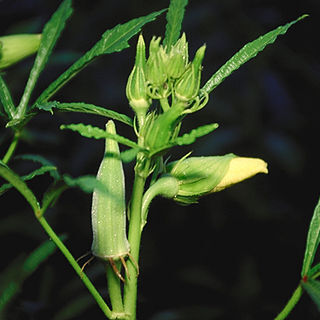Herbs annual, biennial, or perennial, often hispid or tomentose, hairs often mostly simple. Leaves entire or palmately lobed. Flowers solitary, axillary, yellow or red. Epicalyx lobes 5-15, filiform, very rarely lanceolate, persistent. Calyx spathaceous, splitting along 1 side at anthesis, apex 5-toothed, caducous with corolla. Corolla with a dark red center, funnel-shaped; petals 5. Staminal column shorter than corolla, 5-toothed at apex, with anthers at base. Ovary 5-loculed; ovule many per locule; style single with 5 sessile capitate stigmas. Capsule elongate, loculicidal, pubescent or hispid. Seeds reniform or globose, many, glabrous, smooth.
Herbs, annual [perennial], [subshrubs], glabrate to densely hairy, often harshly so. Stems not hairy. x = 29, 30, 33, 34, 36.
Ovary 5-locular, loculi pluriovulate; style not manifestly branched, with 5 sessile or subsessile capitate stigmas.
Calyx thin, splitting laterally, circumscissile, slightly joined to the base of the corolla and deciduous with it.
Epicalyx of 6–numerous filiform or linear bracteoles or much reduced and very caducous.
Flowers solitary, axillary or in terminal racemes by reduction of the upper leaves.
Seeds with minute stellate hairs and sometimes also pilose.
Leaves palmately lobed or divided (rarely almost entire).
Capsule elongated, oblong or ellipsoid.
Staminal tube as in Hibiscus.
Annual or perennial herbs.


